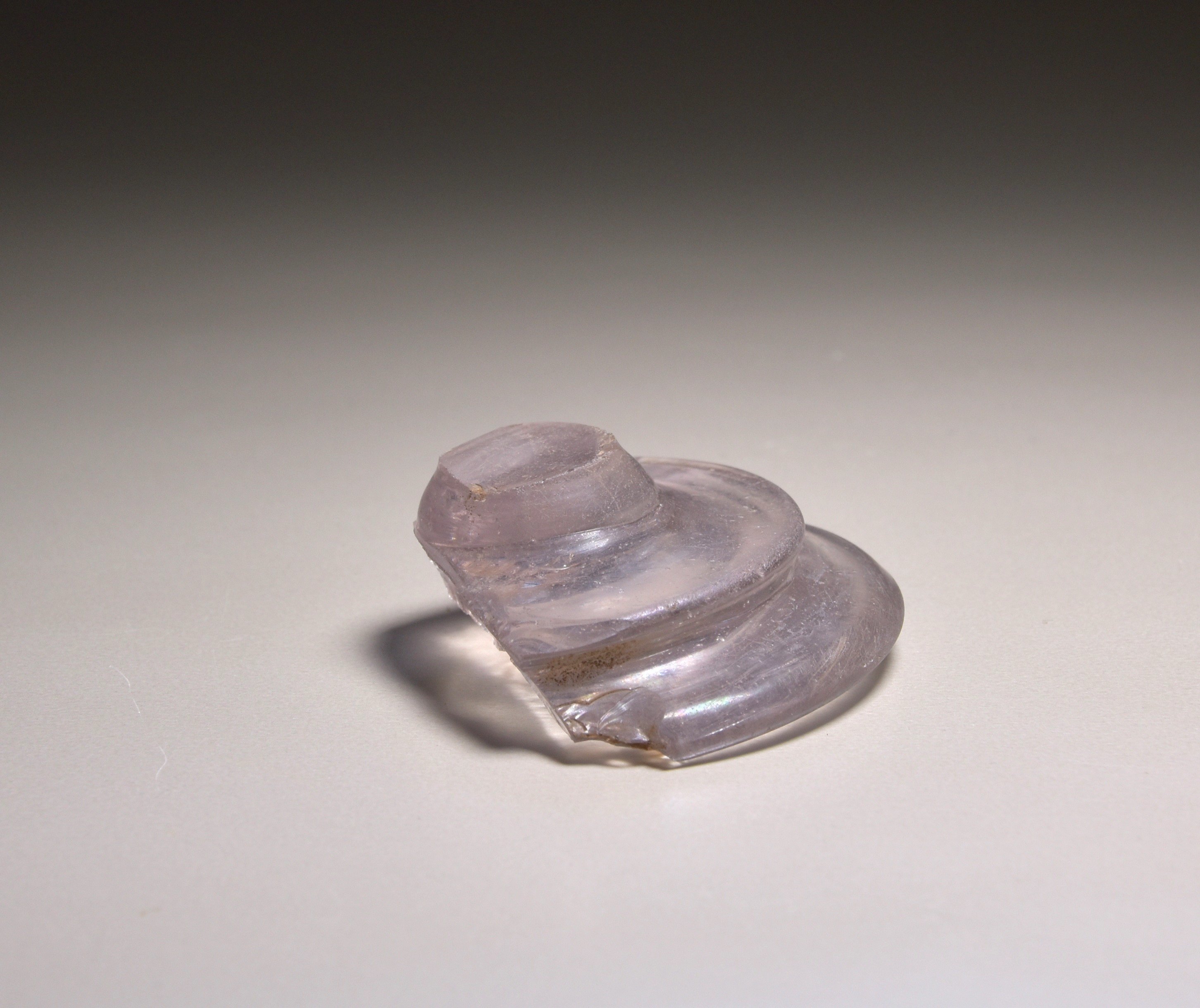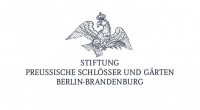Scherbe eines runden Pokalfußes aus farblosem Glas, violett solarisiert, am Ofen geformt, auf größere Fußscheibe aufgeschmolzen mit Abrissnarbe am Boden.
Dieser Bodenfund kam auf dem Areal von Jagdschloss Grunewald zutage. Aus brandenburgischer Produktion sind mit einem vergleichbaren, getreppten Fuß trichterförmige Branntweingläser im Bestand der SPSG überliefert, die ins 18. Jahrhundert datieren (Inv.-Nr. XIII 709 und XIII 757). Es handelt sich dabei um frühe Beispiele für eine funktionsorientierte Formgebung.
Verena Wasmuth
en

